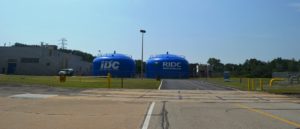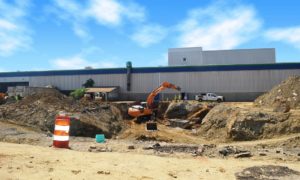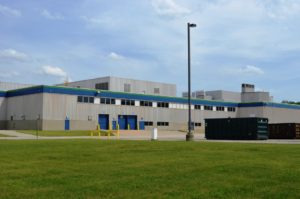Communities all over the country are dealing with the aftermath of the loss of heavy industry and the jobs that went with it.
Huge buildings and campuses built for companies that employed thousands of workers now lay vacant, with a corresponding impact on tax revenues and all the local services those revenues provide. The challenges are complex.
Everyone wants to get those properties back on the tax rolls, but is that in and of itself enough?
Purely market driven sales could accomplish that in many cases, with the result being a warehouse or storage facility that can function on the site as is, but will provide few jobs, low tax revenues and very little benefit to the community.
And yet, finding a private sector developer to take over such a project is daunting, as they are bound to face millions in infrastructure costs and potential environmental issues, and significant financing issues before they even begin to reinvent and rebuild the property according to a new vision for occupants.
The Pittsburgh region is tackling some of these issues through the Regional Industrial Development Corporation (RIDC).
As a private, non-profit development entity that is mission driven, RIDC can afford to take a long view of projects because of its strong balance sheet, and is able to combine the financial wherewithal and development expertise of a private developer with the community-oriented approach of a nonprofit.
A major project underway in Westmoreland County, Pennsylvania is a good illustration. Originally owned but never used by Chrysler, Volkswagen took over the site in 1976 with nearly $100 million in government assistance, highway and rail improvements, and a property-tax exemption for the nation’s first foreign-owned auto assembly plant. Volkswagen invested over $250 million into the building to manufacture its diesel-powered Rabbit, along with the Golf and Jetta.
In 1990, with Volkswagen having vacated the property, Sony began leasing the plant for its cathode ray tube manufacturing operations for television and display terminals.
By the late 1990s, Sony employed more than 3,000 at the manufacturing facility. That ended when Sony closed the facility in 2010, and it was owned by the Pennsylvania Industrial Development Authority (PIDA).
Five years ago, PIDA turned the property over to RIDC through a long-term lease with a purchase option. The 2.8 million square foot, 350-acre site required significant new infrastructure, having previously utilized a central utility plant as a single user facility, and a reconfiguration to become a multi-purpose, multi-tenant property.
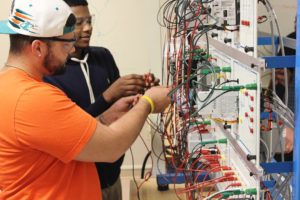 RIDC partnered with Westmoreland County, so that it would have community representation at the table. As it’s RIDC’s mission to support community development, the County’s participation ensured that the vision for re-development would meet the community’s needs.
RIDC partnered with Westmoreland County, so that it would have community representation at the table. As it’s RIDC’s mission to support community development, the County’s participation ensured that the vision for re-development would meet the community’s needs.
“The strong partnership the WCIDC built with RIDC is significant because a project of this magnitude requires the strengths and attributes of both organizations to ensure its success,” says Jason Rigone, Executive Director, Westmoreland County Industrial Development Corporation.
“When Sony closed their doors, it was the second time in four decades an international corporate decision impacted the county, left the site, and in turn, left many people in our community without jobs. As RIDC and WCIDC work together to convert the plant into a multi-tenant facility, our end goal is to fill the space with the types of jobs that offer a living wage,” he continued.
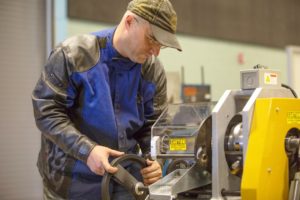 The partnership with Westmoreland County is important for a variety of reasons. We have all seen examples of large scale projects stalling because of issues related to zoning or other community concerns.
The partnership with Westmoreland County is important for a variety of reasons. We have all seen examples of large scale projects stalling because of issues related to zoning or other community concerns.
Having a partner who can help the project team navigate potentially thorny community and government relations issues is extremely valuable.
Also, as the project is in their communities, when prospective tenants need information or insights related to their own business needs, they can obtain it directly from the source.
Completion of this turnaround is expected to take 10-years and cost over $100 million.
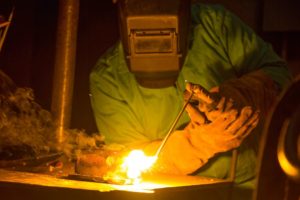 The upfront costs of infrastructure and reconfiguration of the property were significant and, while it will benefit the entire property over time, much of it needed to be incurred at the outset to allow for occupancy by the first tenants.
The upfront costs of infrastructure and reconfiguration of the property were significant and, while it will benefit the entire property over time, much of it needed to be incurred at the outset to allow for occupancy by the first tenants.
RIDC can take on such challenges because, as a nonprofit, it can rely on the strength of its overall portfolio and not require short-term profits from any one project to satisfy investors.
Today, the property has approximately 1 million square feet leased. It offers large utility capacity, direct railroad access and superb connections to the State highway system.
The site’s first major manufacturing tenants include: DNP IMS America, Siemens and Cenveo. Westmoreland County Community College also recently opened an Advanced Technology Center in the building, which occupies 73,500 square feet of space and houses over 700 total employees.
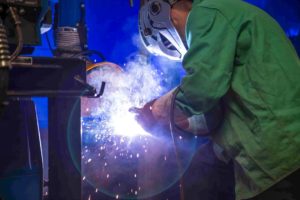 “Westmoreland County Community College strives to fuel the region’s economic, workforce, and career culture vitality by identifying changing workforce needs, educating citizenry, and filling in the gaps with a trained workforce,” said Byron C. Kohut, Dean, School of Technology and the Advanced Technology Center (ATC) at the Westmoreland County Community College.
“Westmoreland County Community College strives to fuel the region’s economic, workforce, and career culture vitality by identifying changing workforce needs, educating citizenry, and filling in the gaps with a trained workforce,” said Byron C. Kohut, Dean, School of Technology and the Advanced Technology Center (ATC) at the Westmoreland County Community College.
“We founded the ATC with the vision that it would become Western Pennsylvania’s premier resource for technical and workforce development education and training, and serve as the regional asset for economic development activities and business and industry support. RIDC Westmoreland, and its goal of catalyzing economic growth and high-quality job creation in the county, was the natural place to house the Advanced Technology Center,” he concluded.
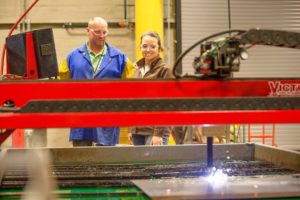 “Creating opportunities for job growth is a key focus of this project, and Westmoreland County Community College’s Advanced Technology Center (ATC) plays a significant role in doing just that. The ATC provides affordable, hands-on learning to prepare students and incumbent workers for high-demand, technically oriented careers in manufacturing, energy and other sectors,” says Mr. Rigone.
“Creating opportunities for job growth is a key focus of this project, and Westmoreland County Community College’s Advanced Technology Center (ATC) plays a significant role in doing just that. The ATC provides affordable, hands-on learning to prepare students and incumbent workers for high-demand, technically oriented careers in manufacturing, energy and other sectors,” says Mr. Rigone.
The project is being done in phases, with new space always being prepared in advance of the next new occupant, and completion is expected in approximately five years from now. It’s a project that is already meeting its targets and its goals. The property is back on the tax rolls and is gradually filling up with businesses and jobs.
It is once again becoming an asset for the community. But it has required collaborative thinking, partnerships with public and private entities, and a multi-faceted development plan that balanced profitability with community needs.
About the Author:
Donald F. Smith, Jr., Ph.D is the President of RIDC of Southwestern Pennsylvania. He is a nationally recognized expert in regional economic development, with a wide variety of work experience at the local, regional, state and national levels. With a unique blend of academic and practitioner experience, Don’s work has focused on how regions can leverage and complement their innovation institutions.
President of RIDC since 2009, he has also served as a lead analyst on the statewide economic development strategy Investing In Pennsylvania’s Future in 1987, through work on the Regional Economic Revitalization Initiative, and key roles in the formation of Innovation Works in 1998, The Pittsburgh Digital greenhouse in 1999 and the Life Sciences Greenhouse in 2000.
Don held the nationally unique role of VP of Economic Development for both Carnegie Mellon University and the University of Pittsburgh – the first such collaboration between unaffiliated universities to advance regional economic development.


